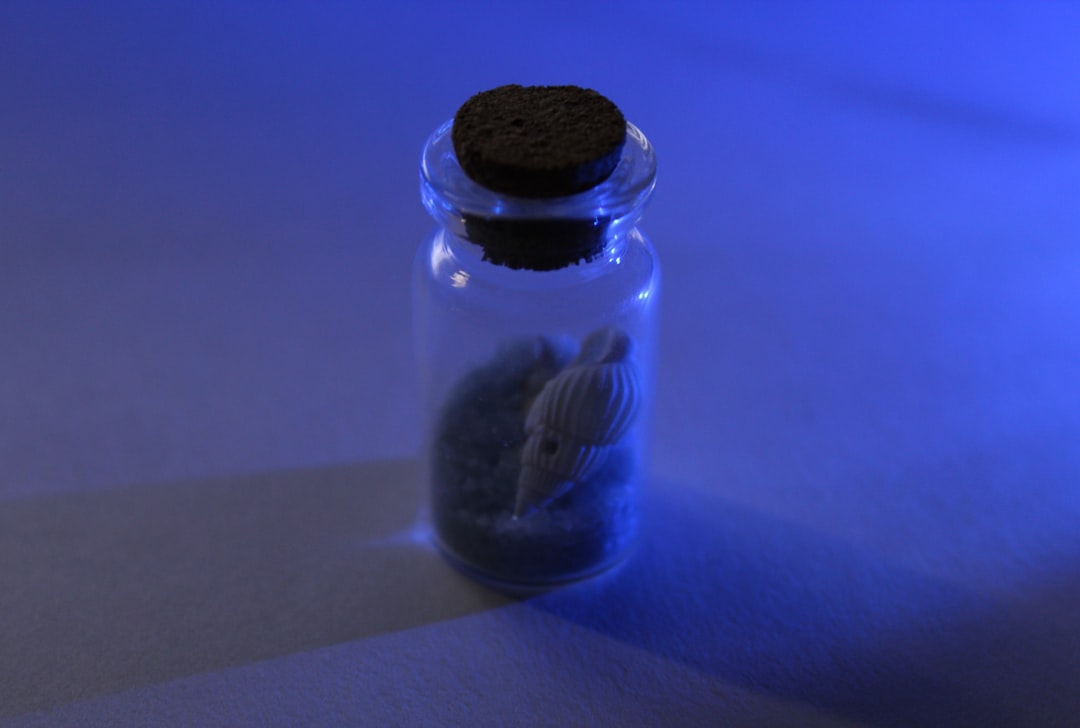The Blue Fairy, a pivotal character in Carlo Collodi’s classic tale “Pinocchio,” emerges from a rich tapestry of folklore and literary tradition. Her origins can be traced back to the early 19th century, when fairy tales began to evolve into more complex narratives that explored themes of morality, growth, and transformation. In the context of “Pinocchio,” the Blue Fairy serves as a guiding force, embodying the ideals of kindness and compassion.
She is not merely a whimsical figure; rather, she represents the nurturing aspect of parental love and the potential for change that exists within every individual. In the story, the Blue Fairy first appears when she brings Pinocchio to life, imbuing him with the ability to think and feel. This act of creation is significant, as it sets the stage for Pinocchio’s journey from a wooden puppet to a real boy.
The Blue Fairy’s entrance marks a turning point in the narrative, introducing an element of magic that intertwines with the moral lessons that follow. Her character is steeped in mystery and enchantment, drawing upon the archetype of the benevolent fairy who intervenes in the lives of those in need. This origin story not only establishes her role as a catalyst for change but also highlights the importance of guidance and support in the journey toward self-discovery.
Key Takeaways
- The Blue Fairy in Pinocchio is based on the character of the Fairy with Turquoise Hair from the original Italian story, “The Adventures of Pinocchio” by Carlo Collodi.
- The Blue Fairy plays a crucial role in Pinocchio’s transformation from a wooden puppet to a real boy, serving as a guide and mentor throughout his journey.
- With her magical powers, the Blue Fairy is able to bring Pinocchio to life, protect him from harm, and even resurrect him after his untimely demise.
- The Blue Fairy’s importance in Pinocchio’s journey lies in her ability to provide guidance, support, and moral lessons that help shape his character and lead him towards redemption.
- Symbolizing hope and redemption, the Blue Fairy represents the possibility of transformation and the power of goodness in the face of adversity.
The Role of the Blue Fairy in Pinocchio’s Transformation
The Blue Fairy plays a crucial role in Pinocchio’s transformation, acting as both a mentor and a moral compass throughout his adventures. Her influence is felt deeply as she encourages him to embrace honesty and integrity, qualities that are essential for his growth. When Pinocchio strays from the path of virtue, it is the Blue Fairy who intervenes, reminding him of the consequences of his actions.
This dynamic relationship between Pinocchio and the Blue Fairy illustrates the importance of accountability and the need for guidance in navigating life’s challenges. As Pinocchio embarks on his journey, he encounters various temptations and distractions that threaten to derail his progress. The Blue Fairy’s presence serves as a constant reminder of his ultimate goal: to become a real boy.
Through her gentle nudges and occasional stern warnings, she instills in him the values that will lead to his transformation. Her role transcends that of a mere fairy godmother; she embodies the essence of parental love, providing both support and discipline as Pinocchio learns to navigate the complexities of life. This duality in her character emphasizes the importance of balance between freedom and responsibility in personal growth.
The Blue Fairy’s Magical Powers

The Blue Fairy is endowed with magical powers that serve as a vehicle for transformation and growth within the narrative. Her abilities are not merely for spectacle; they are intricately tied to the moral lessons that underpin Pinocchio’s journey. For instance, her power to grant wishes and alter reality reflects the potential for change that exists within every individual.
When she grants Pinocchio’s desire to become a real boy, it symbolizes not just a physical transformation but also an emotional and ethical awakening. Moreover, her magic often manifests in moments of crisis, providing Pinocchio with opportunities for redemption. When he finds himself in dire situations, it is often the Blue Fairy who intervenes, using her powers to guide him back on track.
This aspect of her character reinforces the idea that true magic lies not only in fantastical abilities but also in the capacity to inspire change through love and guidance. The Blue Fairy’s magical powers thus serve as a metaphor for the transformative potential inherent in all individuals when they are supported by those who care for them.
The Blue Fairy’s Importance in Pinocchio’s Journey
| Character | Importance |
|---|---|
| The Blue Fairy | Grants Pinocchio’s wish to become a real boy |
| The Blue Fairy | Guides and advises Pinocchio throughout his journey |
| The Blue Fairy | Represents hope, morality, and the possibility of redemption |
| The Blue Fairy | Teaches Pinocchio valuable life lessons |
The importance of the Blue Fairy in Pinocchio’s journey cannot be overstated. She serves as a beacon of hope and guidance, illuminating the path toward self-discovery and moral integrity. Without her presence, Pinocchio’s journey would lack direction and purpose, as he would be left to navigate a world filled with temptations and pitfalls on his own.
The Blue Fairy’s interventions are crucial moments that propel him toward growth, reminding him of his potential and encouraging him to strive for betterment. Her significance extends beyond mere guidance; she embodies the ideals of love, sacrifice, and redemption. The sacrifices she makes for Pinocchio highlight her unwavering commitment to his well-being.
In moments when he falters or loses his way, it is her belief in him that reignites his determination to change. This relationship underscores the theme of unconditional love, illustrating how support from others can inspire individuals to rise above their shortcomings and strive for greatness.
The Blue Fairy’s Symbolism in the Story
In “Pinocchio,” the Blue Fairy symbolizes hope, innocence, and the transformative power of love. Her blue hue is often associated with tranquility and serenity, reflecting her nurturing nature as she guides Pinocchio through his trials. As a symbol of hope, she represents the possibility of redemption and growth, reminding readers that even those who stray from their path can find their way back through love and guidance.
Additionally, the Blue Fairy embodies the concept of innocence lost and regained. As Pinocchio navigates a world filled with deception and temptation, her presence serves as a reminder of his original purity and potential. She encourages him to embrace honesty and integrity, reinforcing the idea that true transformation comes from within.
Through her character, Collodi weaves a narrative that emphasizes the importance of maintaining one’s innocence while also acknowledging the complexities of human nature.
The Blue Fairy’s Influence on Pinocchio’s Moral Development

The Blue Fairy’s influence on Pinocchio’s moral development is profound and multifaceted. She serves as a constant reminder of the values he must uphold to achieve his goal of becoming a real boy. Through her teachings, Pinocchio learns about honesty, responsibility, and empathy—qualities that are essential for personal growth and social acceptance.
Her interventions often come at critical junctures in his journey, reinforcing the idea that moral development is an ongoing process shaped by experiences and choices. As Pinocchio grapples with various challenges, it is the Blue Fairy’s guidance that helps him navigate ethical dilemmas.
This dynamic illustrates how moral development is not merely about adhering to rules but also about understanding one’s impact on others. The Blue Fairy’s role as a mentor highlights the importance of having positive influences in one’s life to cultivate moral integrity.
The Blue Fairy’s Lessons for Pinocchio
Throughout “Pinocchio,” the Blue Fairy imparts valuable lessons that resonate with readers of all ages. One of her most significant teachings is the importance of honesty. She emphasizes that truthfulness is foundational to building trust and relationships with others.
This lesson becomes particularly poignant when Pinocchio experiences the consequences of his lies—his nose grows longer each time he deceives others. Through this magical consequence, Collodi illustrates how dishonesty can lead to isolation and regret. Another crucial lesson imparted by the Blue Fairy is the value of perseverance.
She encourages Pinocchio to remain steadfast in his pursuit of becoming a real boy despite setbacks and challenges. Her unwavering belief in his potential serves as motivation for him to keep striving for improvement. This lesson resonates deeply with readers, reinforcing the idea that growth often requires resilience and determination in the face of adversity.
The Blue Fairy’s Guidance in Pinocchio’s Adventures
The Blue Fairy’s guidance is instrumental during Pinocchio’s many adventures, serving as a stabilizing force amid chaos and uncertainty. Each time he encounters danger or temptation—whether it be from mischievous characters or perilous situations—her presence looms large as a reminder of his ultimate goal. She often appears at critical moments to offer advice or assistance, reinforcing her role as a guardian figure who watches over him.
Her interventions are not always direct; sometimes they come in subtle forms, such as dreams or visions that prompt Pinocchio to reflect on his choices. This nuanced approach underscores her wisdom as a mentor who understands that true growth often comes from self-discovery rather than overt instruction. By allowing Pinocchio to learn from his mistakes while still providing support when needed, she fosters an environment conducive to personal development.
The Blue Fairy’s Representation of Hope and Redemption
The Blue Fairy stands as a powerful representation of hope and redemption throughout “Pinocchio.” Her unwavering belief in Pinocchio’s potential serves as a beacon during his darkest moments, reminding him—and readers—that change is always possible regardless of past mistakes. This theme resonates deeply within the narrative, illustrating how love and support can inspire individuals to rise above their shortcomings. Her character embodies the idea that redemption is not merely about erasing past wrongs but rather about acknowledging them and striving for betterment.
The Blue Fairy’s presence reinforces this notion by consistently encouraging Pinocchio to learn from his experiences rather than succumb to despair or hopelessness.
The Blue Fairy’s Legacy in Popular Culture
The legacy of the Blue Fairy extends far beyond Collodi’s original tale; she has become an iconic figure within popular culture. Her character has been adapted into various forms of media, including animated films, stage productions, and modern retellings that continue to resonate with audiences today. Disney’s animated adaptation introduced her to new generations, solidifying her status as a beloved character synonymous with magic and transformation.
In contemporary interpretations, the Blue Fairy often serves as an archetype for mentors or guiding figures who help protagonists navigate their journeys toward self-discovery. Her enduring appeal lies in her embodiment of universal themes such as hope, love, and redemption—qualities that transcend cultural boundaries and continue to inspire storytellers across genres.
The Blue Fairy’s Enduring Impact on Children’s Literature
The impact of the Blue Fairy on children’s literature is profound and far-reaching. As one of literature’s earliest representations of a nurturing mentor figure, she has paved the way for countless characters who guide young protagonists through their journeys toward maturity. Her lessons about honesty, perseverance, and moral integrity resonate deeply within children’s narratives, shaping how stories are told across generations.
Moreover, her character has influenced how authors approach themes related to growth and transformation in children’s literature. The archetype she represents—a wise guide who encourages self-discovery—continues to appear in modern tales aimed at young readers. By embodying qualities such as compassion and understanding while also holding characters accountable for their actions, she has set a standard for how mentors are portrayed in literature aimed at children.
In conclusion, the Blue Fairy remains an enduring symbol within “Pinocchio” and beyond—a testament to the power of love, guidance, and hope in shaping one’s journey toward self-discovery and moral integrity. Her legacy continues to inspire both readers and writers alike, ensuring that her lessons will resonate for generations to come.
In the enchanting tale of Pinocchio, the character of the Blue Fairy plays a pivotal role in guiding the wooden puppet towards becoming a real boy. Her magical influence and moral lessons are central to the story’s themes of honesty and redemption. For those interested in exploring more about the fascinating origins and interpretations of fairy tales, you can read a related article on this topic at Hey Did You Know This.
WATCH THIS! The Pinocchio Story Disney Doesn’t Want You To Know (It’s Brutal)
FAQs
What is the real blue fairy in Pinocchio?
The real blue fairy in Pinocchio is a character from the Italian children’s novel “The Adventures of Pinocchio” by Carlo Collodi. She is a magical and benevolent fairy who plays a pivotal role in the story, granting Pinocchio’s wish to become a real boy.
What is the significance of the blue fairy in Pinocchio?
The blue fairy in Pinocchio represents hope, redemption, and the power of transformation. She serves as a guiding and nurturing figure for Pinocchio, helping him learn valuable life lessons and ultimately achieve his goal of becoming a real boy.
Is the blue fairy a popular character in literature and media?
Yes, the blue fairy from Pinocchio is a well-known and beloved character in literature and media. She has been featured in numerous adaptations of the story, including films, television shows, and stage productions, and continues to captivate audiences of all ages.
What are some key characteristics of the blue fairy in Pinocchio?
The blue fairy is often depicted as a beautiful and ethereal being with magical powers. She is compassionate, wise, and patient, and she serves as a source of guidance and support for Pinocchio throughout his journey.
How does the blue fairy help Pinocchio in the story?
The blue fairy helps Pinocchio by granting his wish to become a real boy and by providing him with opportunities to prove himself and make positive choices. She offers him guidance, encouragement, and second chances, ultimately leading him toward personal growth and transformation.
